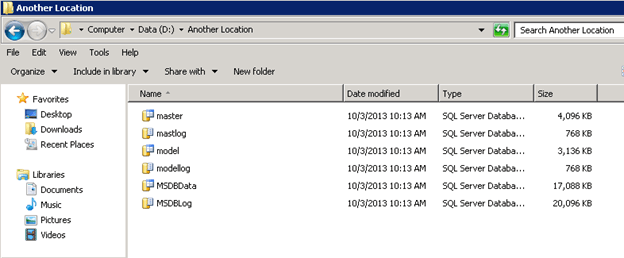
- #TABLE PARTITIONING IN SQL SERVER 2012 ENTERPRISE EDITION UPDATE#
- #TABLE PARTITIONING IN SQL SERVER 2012 ENTERPRISE EDITION ARCHIVE#
It doesn’t move any data around, so to actually move the data from the filegroup where it lived to the old, slow disk archival filegroup, you need to move the data, but you move it when the partition isn’t attached to the existing partitioned table. The switch operation is so fast because all it does is change metadata. There is a bit of a catch to this part: With archiving, you often want to move the old data to slower or different storage.
#TABLE PARTITIONING IN SQL SERVER 2012 ENTERPRISE EDITION ARCHIVE#
When your data is aligned, deleting or archiving data is as simple as switching a table out of the current partition, after which you can unload or archive it at your leisure. If your data is partitioned on boundaries that are also the natural boundaries on which you add or remove data, the data is considered to be aligned.

The following table specifies the maximum sizes and number of various objects that were tested in the SQL Server Utility.
#TABLE PARTITIONING IN SQL SERVER 2012 ENTERPRISE EDITION UPDATE#
Limited by number of objects in a database.Ĭolumns per UPDATE statement (Wide Tables) Partitions per partitioned table or index Limited by number of objects in a database Number of grouping sets generated by operators in the GROUP BY clause Number of distinct expressions in the GROUP BY clause when any of the following are present: CUBE, ROLLUP, GROUPING SETS, WITH CUBE, WITH ROLLUP Length of a string containing SQL statements (batch size) Maximum Sizes / Numbers SQL Server (32-bit)īytes in source text of a stored procedure.īytes per VARCHAR(MAX), VARBINARY(MAX), XML, TEXT, or IMAGE columnĬharacters per NTEXT or NVARCHAR(MAX) columnĬolumns or expressions in a GROUP BY WITH CUBE or WITH ROLLUP statementĥ0 instances on a stand-alone server for all SQL Server editions. The following table specifies the maximum sizes and number of various objects defined in SQL Server databases or referenced in Transact-SQL statements.

The following tables specify the maximum sizes and numbers of various objects defined in SQL Server 2012 components, and compared against the maximum sizes and number of various objects defined in SQL Server 2008 and SQL Server 2008 R2 components. SQL Server 2012 Maximum Capacity Specifications (32-bit Server) Home > SQL Server 2012 > SQL Server 2012 Maximum Capacity Specifications (32-bit Server)


 0 kommentar(er)
0 kommentar(er)
